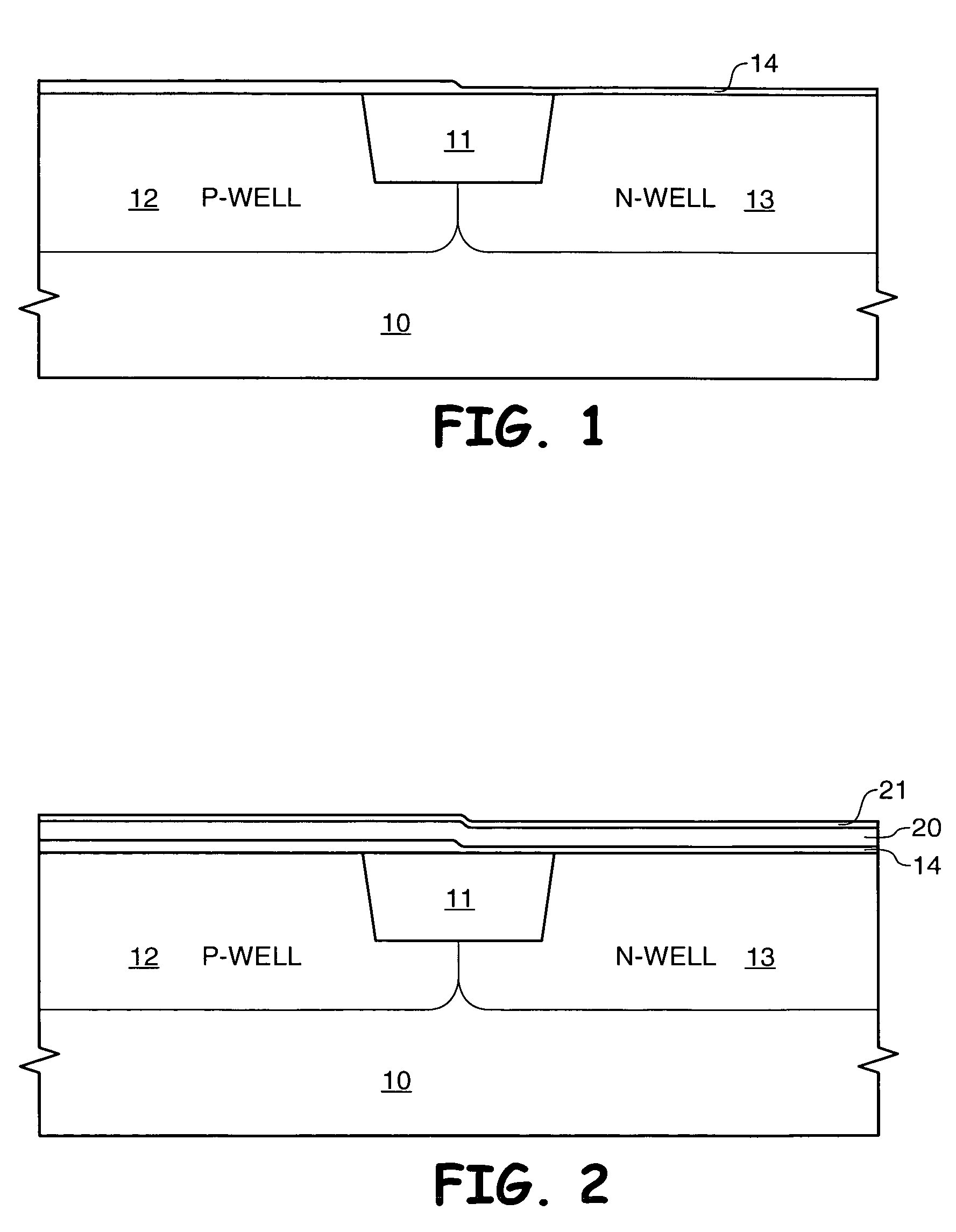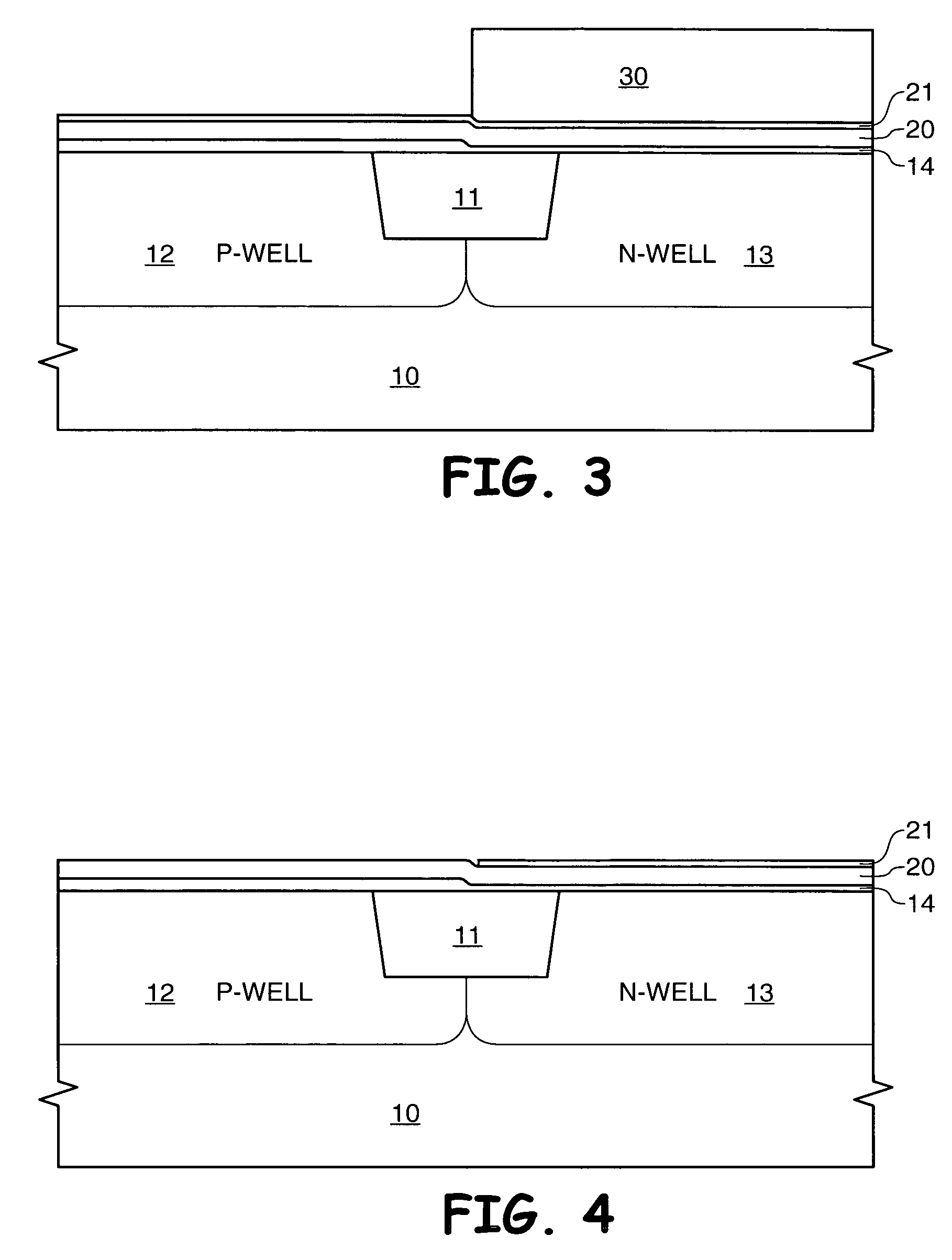Methods of enabling polysilicon gate electrodes for high-k gate dielectrics
a polysilicon and dielectric technology, applied in the field of complementary transistors, can solve the problems of large shift in the choice of a material with the appropriate work function as the gate electrode remains a challenge, and the transistor vsub>t /sub>will shift larg
- Summary
- Abstract
- Description
- Claims
- Application Information
AI Technical Summary
Benefits of technology
Problems solved by technology
Method used
Image
Examples
Embodiment Construction
[0016]The following exemplary implementations are in reference to complementary transistors and the formation thereof. While the concepts of the present invention are conducive to transistor structures for semiconductor memory devices, the concepts taught herein may be applied to other semiconductor devices that would likewise benefit from the use of the process disclosed herein. Therefore, the depictions of the present invention in reference to transistor structures for semiconductor memory devices are not meant to so limit the extent to which one skilled in the art may apply the concepts taught hereinafter.
[0017]In the following description, the terms “wafer” and “substrate” are to be understood as a semiconductor-based material including silicon, silicon-on-insulator (SOI) or silicon-on-sapphire (SOS) technology, doped and undoped semiconductors, epitaxial layers of silicon supported by a base semiconductor foundation, and other semiconductor structures. Furthermore, when referen...
PUM
| Property | Measurement | Unit |
|---|---|---|
| dielectric constant | aaaaa | aaaaa |
| threshold voltage | aaaaa | aaaaa |
| voltage | aaaaa | aaaaa |
Abstract
Description
Claims
Application Information
 Login to View More
Login to View More - R&D
- Intellectual Property
- Life Sciences
- Materials
- Tech Scout
- Unparalleled Data Quality
- Higher Quality Content
- 60% Fewer Hallucinations
Browse by: Latest US Patents, China's latest patents, Technical Efficacy Thesaurus, Application Domain, Technology Topic, Popular Technical Reports.
© 2025 PatSnap. All rights reserved.Legal|Privacy policy|Modern Slavery Act Transparency Statement|Sitemap|About US| Contact US: help@patsnap.com



